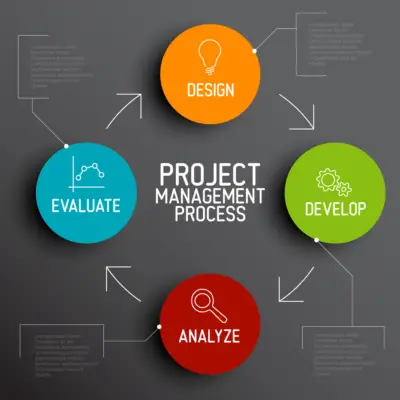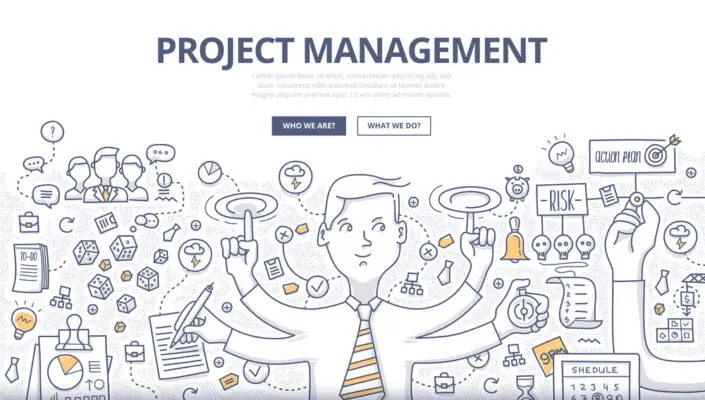In project management, numerous elements are at play that influence productivity, efficiency, and the overall success of a project.
One crucial concept in this regard is resource scheduling — strategically allocating and managing resources to optimize operations.
Understanding how resource scheduling impacts the flexibility of a project can be key to striking a balance that promotes efficiency without hindering necessary adaptability.
This article explores the nitty-gritty of resource scheduling, its relationship with project flexibility, and how project managers can balance these two factors to drive project success.
Understanding Resource Scheduling
Understanding Resource Scheduling and Its Importance in Project Management
Resource scheduling is a critical component of effective project management. It’s the process of planning and allocating the necessary resources – including personnel, equipment, and materials.
To specific tasks and activities associated with a project. The primary goal of resource scheduling is to ensure that resources are used efficiently and tasks are completed within the stipulated project timeline.
This process is vital in project management as it helps project managers make informed decisions about resource allocation.
It allows them to identify who is available to work on particular tasks, when, what specific skills they possess, and how long each task will take.
In doing so, scheduling aids in identifying potential bottlenecks and conflicts that can significantly derail a project.
Resource scheduling involves several components: resource planning, allocation, leveling, and ongoing monitoring and adjustments.
On the implementation, several organizations utilize specialized software tools for scheduling, which include features to create sophisticated schedules, visualize resource allocation, and easily adjust schedules when necessary.
How Resource Scheduling Reduces Flexibility in Managing Projects
Despite numerous benefits, resource scheduling can reduce flexibility in managing projects.
Once a resource schedule is set, project managers may find adjusting challenging, especially when dealing with complex projects or unexpected events.
This is essentially because resources have been pre-allocated, and modifying their distribution might disrupt project progress.
Using specialized software tools for scheduling often necessitates strict adherence to scheduling guidelines and protocols.
These tools reduce the ability of project managers to make on-the-fly decisions and instant adjustments.
This can limit the project manager’s flexibility in responding to unexpected changes or emergencies.
Moreover, scheduling often involves significant upfront planning and requires a well-defined project scope and foreseeable workflows, which might be lacking, particularly during the early stages of a project.
The efforts required to schedule resources may discourage flexibility in project design and execution.
Another constraint is that resource scheduling can potentially restrain the creativity and autonomy of the team members.
With a predetermined schedule dictating who does what and when it might discourage the team members from exploring potentially more efficient or innovative solutions.
While resource scheduling is a powerful tool for efficient project management, it may pose challenges to flexibility.
A balance must be struck between efficient resource allocation and flexibility to handle unexpected events gracefully.
Overview of Renowned Resource Scheduling Tools and Mechanisms
Today’s project management field employs various dynamic scheduling tools, with leading software like Microsoft Project, Teamwork, and Smartsheet at the forefront.
These tools are esteemed for their robust features that enable the creation of comprehensive and effectual resource schedules, which include visualising resource allocation, flagging conflicts, and effortlessly adjusting the schedules.
In addition to software options, project managers often employ conventional and time-tested resource scheduling techniques.
Such methods, including the Critical Path Method (CPM), Program Evaluation and Review Technique (PERT), and Gantt charts, present an efficient and traditional approach to resource scheduling.
These techniques allow managers to visualize the allocation of resources along the project timeline, identify potential bottlenecks, and maintain viable operational flexibility despite the inherent limitations of the tools and techniques.

Resource Scheduling and Flexibility: The Connection
Deciphering the Concept of Resource Scheduling
Resource scheduling is a critical project management strategy. It involves proactively planning and regulating resources, such as labour, materials, and equipment, allocated to definite tasks within a project’s framework.
Resource scheduling aims to achieve an optimal balance in the utilization and distribution of resources, guarding against excess and under-supply.
Understanding the nature and aim of resource scheduling, project managers can develop strategies that efficiently utilise resources while maintaining project flexibility.
Connection between Resource Scheduling and Project Flexibility
Project flexibility refers to the ability of a project manager to adapt and change project plans, timelines, and processes in response to unforeseen situations, such as sudden changes in client demands, unexpected delays, or even crises.
The level of flexibility in managing a project can significantly impact its success or failure.
Resource scheduling can affect flexibility in a project in various ways. A well-managed resource schedule can give the project manager a clear resource allocation overview.
It allows them to anticipate bottlenecks, identify risks, and more effectively manage changes.
It also aids in understanding the dependencies between tasks, which can assist in reconfiguring the schedule if required.
On the other hand, resource scheduling can sometimes limit project flexibility. Once resources are allocated to specific tasks, reallocating them might not always be possible without causing disruptions or delays.
The more detailed and rigid the resource schedule, the less adaptable it is to sudden changes or unexpected events, limiting flexibility.
Implications of Reduced Flexibility in Project Management
By committing resources and locking down a schedule, project managers may have less room to maneuver when unexpected changes occur.
For example, if resources are tightly scheduled, it may be difficult to reallocate resources in response to a sudden change in project requirements or an unforeseen situation.
Strict resource scheduling could limit the team’s ability to innovate or adapt their work processes. This is because changes may require additional resources or time, which may not be available if allocated to existing tasks.
In such situations, the team might be forced to stick to original plans and methodologies, even when they might not be the most effective or efficient.
Striking the Balance: Resource Scheduling and Flexibility
Although resource scheduling can potentially limit certain areas of flexibility in managing projects, it doesn’t have to be a factor of constant obstruction.
Savvy project managers handle this balancing act by establishing a healthy equilibrium between resource scheduling and flexibility.
This is often accomplished through careful planning to ensure optimal resource usage whilst leaving some space for unexpected adjustments.
Methods such as the Critical Chain Project Management (CCPM) approach, which champions flexible resource scheduling, are often utilized.
CCPM involves incorporating buffers into the schedule to account for the unpredictability and alteration often experienced during project execution.
Alternatively, agile project management techniques are another way to encourage flexibility and adaptability, choosing to focus less on detailed preliminary planning.
This agile methodology reassigns resources and schedules as necessary throughout the project to adapt to unexpected changes.
In essence, although resource scheduling may reduce flexibility by setting definite resource allotments, possibly hindering the ability to adjust to changes.
For prudent planning and appropriate scheduling strategies, maximising effective resource use while maintaining some flexibility in managing projects is achievable.

Case Studies: Success and Failures in Resource Scheduling
Case Study: Resource Scheduling in the Aerospace Industry
A remarkable demonstration of successful resource scheduling is evident in the Aerospace industry.
An aerospace manufacturing company faced the challenge of managing numerous projects with overlapping resources and timelines. Introducing an advanced resource scheduling system allowed the company to recognize and manage these overlaps effectively.
Resources were allocated based on availability, and the anticipated workload was projected using the project manager-supplied roadmap.
This strategic move resulted in reduced overstaffing, the prevention of resource exhaustion, and a significant decrease in costs.
However, establishing this resource scheduling system did, to a degree, lessen the company’s adaptability.
Adherence to the schedule meant accommodating unforeseen changes or new project needs without disrupting the preset schedule was challenging for the company.
This revealed the firm’s need to balance the efficient progression of the project timeline while also being ready to handle unexpected changes.
The Disadvantages of Faulty Resource Scheduling in the Construction Industry
A contrasting example can be seen in the construction industry. A construction project of a multi-storied building experienced failure when resource scheduling was poorly implemented.
The project had a pre-determined schedule with all resources allocated, including labor, machinery, and materials.
The project seemed to be operating smoothly until an unexpected shortage of steel led to a work halt, causing significant delays and cost overruns.
Despite having a resource schedule in place, the rigidity of the schedule made flexibility in resource allocation nearly impossible.
The inability to adapt quickly to this unforeseen circumstance and reassign resources accordingly resulted in a significant delay in project completion and increased costs.
The Role of Technology in Resource Scheduling
Advanced technology like Artificial Intelligence and Machine Learning have started playing pivotal roles in resource scheduling.
They have shown promising results in predicting resource needs and adjusting schedules based on real-time changes.
However, depending solely on these technologies could lead to reduced flexibility.
For instance, a software company implemented AI-based resource scheduling for allocating workforce in various ongoing projects.
The software failed to account for the human element in the project management, neglecting factors like team compatibility, individual working styles, and personal time-offs.
While the AI-based system had an efficient resource allocation plan on paper, in reality, it introduced unforeseen complications within the teams, eventually reducing the productivity of the projects.
The rigid system reduced the project manager’s ability to make human-centric decisions, limiting project management flexibility.
Conclusion
The benefits and potential pitfalls of resource scheduling in project management across many industries become evident in analysing various case studies.
With its ability to decrease flexibility for changes and the personal touch in team management, resource scheduling can occasionally lead to inefficiencies and shortcomings, even when it might initially seem like the ideal approach.
The answer lies in including malleable scheduling and maintaining a delicate equilibrium between efficiency and flexibility.

Balancing Resource Scheduling and Project Flexibility
Balancing Resource Scheduling and Project Flexibility
Resource scheduling forms an essential component of project management. It encompasses the organization and allotment of resources – human, material, or time – to different activities or tasks within a project in the most effective manner possible.
However, maintaining a manageable equilibrium between resource scheduling efficiency and flexibility in the project can be a formidable task.
Fundamentally, resource scheduling curtails project flexibility due to its ingrained characteristics.
Project managers agree to a definite sequence of operations by dedicating resources to tasks ahead of time.
Such an arrangement could potentially restrict the adaptability to sudden shifts in circumstances or new emerging priorities throughout the project lifecycle.
Strategizing for an Effective Balance
Project managers can adopt several strategies to create a bridge between resource scheduling and project flexibility.
To ensure the successful implementation of strategies, there are a few key things to remember.
Firstly, it is important to prioritize using efficient resource management techniques. This can include avoiding over-scheduling of resources and building in time buffers to account for unexpected changes.
Secondly, agile project management methods can be adopted, which are adaptive and facilitate constant iteration based on project progress.
Flexibility and adaptability are emphasized by Roach, enabling project teams to pivot in response to changes or fresh insights swiftly. Additionally, there is a third point that needs to be mentioned.
Thirdly, modern project management tools and software can assist in real-time monitoring and adjusting of resource allocation, thus enhancing project flexibility.
These tools can provide insights into resource utilization and help project managers make informed decisions on resource reallocation.
Expected Challenges and Navigating Solutions
Even with meticulous planning, project managers can expect several challenges. One of the primary challenges is the unpredictability of project undertaking .
Where unforeseen circumstances can compel immediate changes that may disrupt the pre-set resource plans. In such cases, project flexibility is vital.
Another challenge is the resistance to change. Team members accustomed to traditional project management approaches may resist more flexible methods, like agile.
Project managers can address this by conducting in-depth training and workshops emphasizing the benefits of such methods.
Navigating The Terrain
Navigating the balance between resource scheduling and project flexibility requires expertise and experience.
It is essential to acknowledge that while resource scheduling brings structure and order to the project, flexibility lets the project adapt to the changing dynamics of the business environment.
Therefore, maintaining an open line of communication with all stakeholders is vital to ensure any changes or adjustments are quickly identified and addressed.
Additionally, regular team meetings and reviews can help identify issues and adjust plans accordingly.
Frequent feedback loops within the team can assist in fostering an environment that encourages adaptation over rigid adherence to schedules.
In conclusion
While resource scheduling can reduce flexibility in managing projects, project managers can strike a balance by planning a flexible schedule, adopting adaptive methodologies, using appropriate project management tools, and engaging in constant communication and feedback with the project team and stakeholders.

In light of this, it becomes crystal clear that resource scheduling serves as a crucial pillar in project management strategy.
While its impact on project flexibility can occasionally be adverse, insightful and strategic planning can establish an effective balance, eventually leading to success.
By navigating through the balancing act between resource scheduling and project flexibility, project managers can unlock opportunities to drive efficiency, adaptability, and ultimately, project execution.
Understanding the nuanced role of resource scheduling is thus a powerful toolkit for every professional involved in managing projects.

Chris Ekai is a Risk Management expert with over 10 years of experience in the field. He has a Master’s(MSc) degree in Risk Management from University of Portsmouth and is a CPA and Finance professional. He currently works as a Content Manager at Risk Publishing, writing about Enterprise Risk Management, Business Continuity Management and Project Management.

